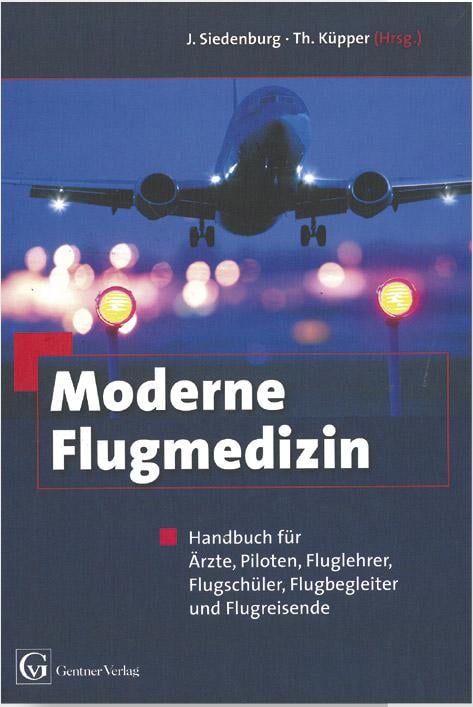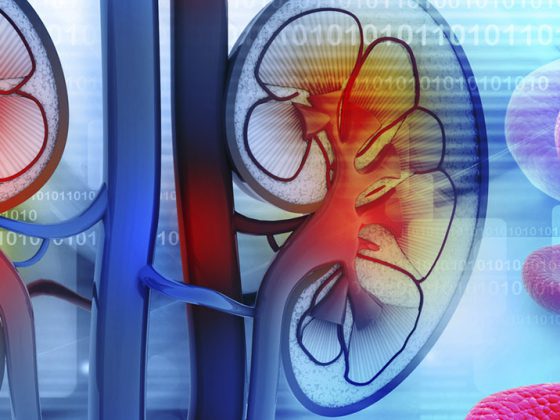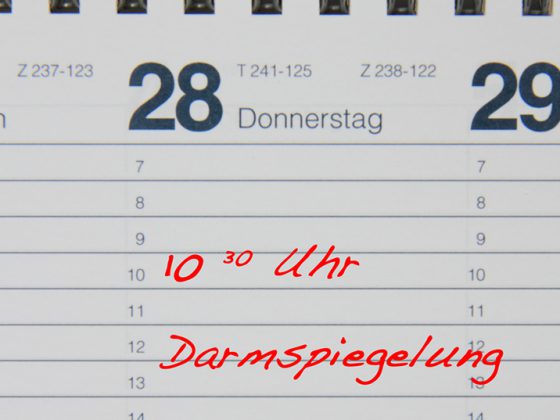Since the first attempts several hundred years ago, aviation has developed into a rapidly advancing field of activity, which today has not only become extremely complex in terms of technology, but has also spawned its own medical specialty: aviation medicine. Nothing less than a standard work is intended by the publication “Modern Aviation Medicine,” which has just been published and prominently opened with a foreword by Dr. Ursula von der Leyen (German Federal Minister of Defense).
And indeed, the book delivers what it promises. Starting with the history of aviation and aviation medicine, it launches a comprehensive all-around look at all relevant areas that are related to flying in some way. With 900 densely written pages, the volume is also considerable. The work is aimed not only at the flight physician, the flight crew and passengers themselves, but also at people who work for the ambulance service, in travel medicine, as flight instructors/students or in the aftercare of accident survivors – and last but not least at the family doctor, who may be the only medical professional to see the passengers again before the flight and who knows their pre-existing conditions and medication regimen. The integrative approach in the form of a cross-section through numerous disciplines is intended to specifically set the book apart from other publications.
Renowned national and international experts in aviation medicine have been recruited for the texts, with a considerable proportion of the articles written by the editors themselves. Dr. med. Jörg Siedenburg, specialist in internal medicine and occupational medicine, flight/travel/rescue physician, himself a professional pilot and honorary flight instructor, and Prof. Dr. med. Thomas Küpper, specialist in occupational/sports medicine, mountain rescue and expedition physician, complement each other perfectly in the acquisition and presentation of the most important aspects of this specialist field.
After an introductory section dealing with historical, legal, and physical-technical aspects of aviation, the chapter on clinical aviation medicine begins. In it, (patho-)physiological aspects of the various organ systems in connection with flight are dealt with. Of course, the cardiovascular and respiratory systems are important medical subspecialties here, but the book also discusses, for example, the demands on the digestive and endocrine systems, the musculoskeletal system, the genitourinary system, psychiatry, the visual/hearing system, and the fields of oncology and dermatology. The fitness and suitability criteria for the various groups of airmen follow in the next section – starting with the pilot himself, through the flight crew and passengers (with and without pre-existing conditions), to air traffic controllers and parachutists. The sub-area of “medications and flying” is also dealt with comprehensively. Finally, there are some chapters with less relevance to the vast majority of physicians, namely medical specifics for special flight operations such as air sports, space flight, paragliding/kite flying, military operations, or ballooning. After further more technical explanations on safety and risk management in aviation, the focus is then on psychological aspects of flying, emergencies on board and (particularly impressive) the worst case, i.e. aviation accidents including evacuation, possible injury patterns and survival after crashes over land, in extreme cold or heat and at sea. Finally, emergency abroad, i.e., repatriation of patients by air, will also be discussed.
Although much of the information may be of little relevance to the general practitioner in his or her day-to-day work (unless he or she is already interested in the basics of aviation and medical specifics in all kinds of flight operations), the work consistently provides him or her with valuable information for dealing with his or her own patients. What psychological processes occur during flying and what happens in people with fear of flying? What is the physiological effect of flying on the different parts of the body? With what pre-existing conditions should caution be taken and why? What should be considered in the medication setting (e.g., taking medication when there is a time difference)? Here, the publication offers a reference tool, which, although in some places it is somewhat sprawling and not always written in an accessible manner, nevertheless provides a scientifically accurate, meticulously documented and well-researched answer to all questions.

Siedenburg J, Küpper TH (eds.): Modern aviation medicine. Handbook for physicians, pilots, student pilots, flight attendants, and air travelers. Gentner Verlag, Stuttgart 2015. 904 pages. EUR 79.00. ISBN 978-3-87247-709-5.
HAUSARZT PRAXIS 2015; 10(12): 4











